Holiday gifts range from cars to tires to starters
Filed under: Equinox, Features, Autos
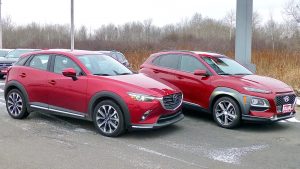
Two of the best inexpensive but high-tech compact SUVs are the Mazda CX-3, left, and the Hyundai Kona.
The model year changeover is extra intriguing this year because of the numerous and impressive bits of technology that have made their way into the automotive world. Here at Newcarpicks, we have whittled down the list of possible candidates for our Car of the Year down to the core, and the final decision will reflect the nation’s never-ending hunger for SUVs but will refuse to also recognize the seeming indifference to poor fuel economy that accompanies the quest for larer SUVs.
No, two of our finalists are more similar than different, and the second of those just arrived for a week-long examinaton in the Great White North. It is the Mazda CX-3 for 2019, which changes subtly from 2018 as a transitional vehicle in Mazda’s always-enticing lineup.
Gazing out at it in the early morning light at the Gilbert Compound on the North Shore of Lake Superior, I couldn’t take my eyes off it. It fairly glowed, like a large ruby, luring me to get out there and drive it. Somebody asked me what color it was, and I said I couldn’t remember the precise name, but it is a deep, lustrous red that goes right to your soul. Or at least my soul.
Then I examined the sticker to see if I could find the color.. There it was: “Soul Red Crystal” it said. Not bad. Maybe the fact I suggested the color went right through me to my soul was a tip. That color came out two years ago as a different and exclusive red on the CX-5, the midsize member of Mazda’s three SUVs. Last year it migrated to other models, where it will continue to be offered.
It turns out that Soul Red Crystal is a $595 option. I mentioned that to my inquisitive friend with the added note that it was a very expensive color, and probably worth it!
Swwms outrageous, perhaps, but I have never seen another color on any car, regardless of price, that affected me the same as Soul Red. So how much is it worth to have a distinctive color that lifted you up every time you approached the vehicle.
The CX-3 is a small SUV, too small by many contemporary standards, but the reason it is one of our finalists is that is loaded up with technology to match or surpass any other SUV, and it has some tricks that are beyond all the others.
As one of our two award leaders coming around the final turn and heading down the homestretch, the CX-3 is opposed by the Hyundai Kona, the smallest SUV offering from that South Korean company, and it, too, comes loaded with technology that other low-priced SUVs can’t hope to challenge.
That, too, looks good in its vast array of colors, but the red one stands out. Together, the two look like later Christmas tree ornaments.
Ah, Christmas is drawing close, and those of us who have family members or close-enough friends deserving of a holiday gift — which includes about all of us! — might leave us baffled about what we could get them that would be really different. Unique, even.
Buying a new vehicle for someone isn’t always possible, but if you need a new vehicle right about now, the CX-3 and the Kona are both available for right around $25,000, which is a modest price, especially when you examine the technology.
There are, of course, other wonderful Christmas gift ideas for a lot less than $25,000.
One is a set of winter or all-season tires, and the idea of the newest Nokian tires was appealing enough that I drove up to Ninth Street and Seventh Avenue East on the Duluth Hillside to talk to Jeff Hofstedt, propriator of “Foreign Affairs,” a cleverly named service outlet for all cars foreign or domestic, and also the nation’s leading seller of Nokian tires.
There are three or four different models of Nokians these days. I remain loyal to the all-season tires, stopping short of the all-out winter tire, the Hakkapeliitta. Without question, the Hakkapeliittas are the best winter tire on the market, matching the legendary Bridgestone Blizzak in glare-ice tracton, and outlasting even that stalwart for long wear in all conditions. I’ve found the WRG, and its newest derivative, the WRG-3, to be outstanding year-round, and still with exceptional snow and ice traction characteristics to get you through the harshest winter.
Both Car and Driver and Motor Trend finally got past the Tire Rack tradeout arrangement for using that company’s test track with the gentleman’s agreement deal that their annual winter tire test would only use winter tires sold at Tire Rack’s mail-order business. Nokian, a company in Finland which, Hoffstedt said, “invented the snow tire,” prefers to sell to smaller dealers and doesn’t go through Tire Rack, meaning Car and Driver and Motor Trend spent all those years comparing winter tires and declaring a winner while exclusing the best — the Nokian. The Hakkapeliitta won the top award by both magazines when they went to the company’s Finland home and tested above the Arctic Circle. I was hoping they’d include the WRG-3, because as an all-season tire, its unique tread compound sticks better than the snowtires of many competitors. Read more
Lexus RX350-L proper way to test new vehicles
Filed under: Equinox, Autos
JOLIET, Illinois
A long trip is the perfect way to scrutinize a new vehicle, and the new 2019 Lexus RX350-L passed its test on a drive from Duluth, Minnesota, to Joliet, Illinois.
It was also an enjoyable way to get the opportunity to drive all sorts of other new vehicles on the private road-racing course called the Autobahn Country Club, and on the neighboring streets and roadways.
My older son, Jack, who assists me with facts and photos of new cars, joined me for the annual trek, and enjoyed everything about the smooth performance and easy cruise-ability of the RX350-L — right up until we got into Illinois and tried to rely on the dash-mounted navigation system to circumnavigate Chicago to reach Joliet, which is located on the southeastern end of Chicago.
The Midwest Auto Media Association (MAMA) conducts annual Spring and Fall Rallies for member journalists and this year’s crop of about 70 new 2019 vehicles was worthy for at least that many journalists to sample.
We don’t race on the track, but drive in single-file order behind a track pace-setter so that we stay in line without passing, keep the gaps close, and get a good feel for a vehicle’s performance and handling in short doses. In some ways, the surrounding roadways in the truck-farm-loaded region can be just about as effective. The point is, manufacturers bring their top new vehicles all to that one place, and we in the media converge on it.
Some of the most impressive new vehicles include the Maserati Levante, a true Italian SUV with an in-house designed pair of engines, put together meticulously in Maranello by cousin Ferrari’s engineers. The 3.8-liter V6 model starts in the $70,000 range with a 424-horsepower twin-turbo 3.0-liter V6, or in the well-over-$100,000 class that includes a 550-horsepower/538 foot-pounds of torque twin-turbo V8 for power.
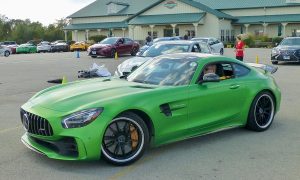
Mercedes will give you an AMG-GT for a little over $100,000, even in lime green. (Jack Gilbert photo)
If that was among the more impressive vehicles, there were a lot of familiar-looking vehicles with significant upgrades on hand. The Mercedes AMG-GT Coupe, for example, in a lime-green color called Green Hell, comes with a 577-horsepower twin-turbo V8 or a meager version of the 4.0-liter V8 with only 469 horses, giving the car a price range from $115,000 to $160,000.
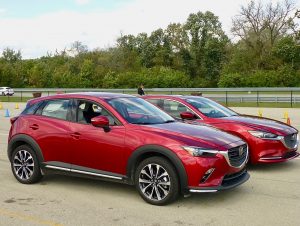
Mazda has spread its unique Soul Red Crystal Metallic throughout its models, including the CX-3 and Mazda6, for a mere $595.
Back in the real world, a couple of my favorites earn accolades from New Car Picks, with the renewed pair from Mazda, the CX3 small SUV and the Mazda3 compact sedan. Both have some mechanical surprises coming, but they also were runaway winners of the best paint job award from us with their Soul Red Metallic color. That paint job came out exclusively on the CX5 when it was redesigned a year ago. Now it’s a stunning upgrade from the other very nice red choices in Mazda’s palette, as it has migrated through all the other models, Mazda6, MX5 Miata, and CX9. It has depth and distinctiveness that is worth a few hundred bucks as an option check-off. Read more
All-new Santa Fe part SUV and part slot car
Filed under: Equinox, Autos
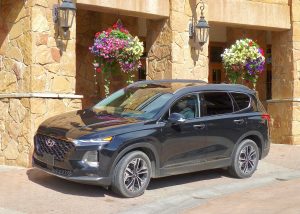
The 2019 Hyundai Santa Fe, all new from the ground up, at the Stein Eriksen Resort in Park City, Utah.
By John Gilbert
PARK CITY, UTAH
Hyundai displayed its latest concepts of all-wheel drive, all-new suspension fore and aft, variable driving modes, and computer-perfected lane-keeping assistance — all at the same time — which I discovered quite unintentionally while pushing a 2019 Santa Fe around some tight curves at nearly 10,000 feet of altitude.
I say unintentional, because I’ve driven many vehicles with all-wheel drive, many with adjustable driving modes, and nearly everything nowadays with some form of lane-guidance or assist, and they have been mostly impressive. But firmly encapsulated in the driver’s seat of a 2019 Hyundai Santa Fe that I was pushing toward its limits on a high mountain 2-lane in Utah was not where I expected to find all those features operating in concert.
When the Santa Fe came out as the most prominent member of Hyundai’s array of SUVs in 2000, it was the South Korean company’s first serious attempt at participating in the newly expanding interest in building a crossover utility vehicle to haul more stuff than just a family of four.
Nobody, including Hyundai, could have foreseen the incredible popularity of SUVs, although the company kept pace very well. It just introduced an impressive small SUV called the Kona, to join the about-to-be-reintroduced compact Tucson, and the larger pair of the Santa Fe and the smaller Santa Fe Sport.
Because it is time to adjust the group, for 2019, the Santa Fe is again motoring ahead into prominence. Technically, the new Santa Fe replaces the current Santa Fe Sport as a compact, with two rows of seats capable of housing five, while the larger sibling remains midsize as the unchanged Santa Fe XL, with three rows of seats.
There are enough high-tech features to keep the assembled auto media engaged, but during the pre-drive seminar at the Stein Eriksen Lodge we also learned about the less obvious upgrades that are most important. The re-engineered Santa Fe is increased in torsional stiffness from 27.2 to 31.5 in resistance to twisting with a body structure altered from 58 percent to 67 percent high-grade steel. Advanced aerospace adhesives do their part to help lower Santa Fe’s weight by 52 pounds, stronger but lighter.
New suspension front and rear feature restructured angles and revised configuration. The new H-Trac all-wheel drive system is located between the axles with electric servo operation of a torque-vectoring system to coordinate the front and rear axles in their perfect swath around curves.
Greatly reduced friction in the new Hyundai-designed 8-speed automatic makes it work more efficiently, with ratios reaching below first and above sixth compared to the current Hyundai-built 6-speed transmission.
Switching the modes from “normal” to “smart” and then into “sport” provides noticeable alteration in steering, suspension, and shift-points to an immediately sportier feeling of control. But that’s just part of the picture.
With H-Trac as a base, the stiffer body with firmer steering mechanism and torque-vectoring makes the system react so promptly it feels as though it is anticipating the need to turn before you turn the wheel — more predictive than reactive, Hyundai says. Simply put, having quicker-steering response while the suspension holds the vehicle flat makes for a more comfortably stable ride.
Meanwhile, the lane-departure settings are aimed for safety, with four different settings. The first is pretty mild and warns you when you touch the lane markings on either side, Two other settings help assist you in staying off or easing away from the side line, and when you get to the fourth level — that’s the prize. It actually uses four ultrasonic sensors, two high-frequency sensors and four other cameras monitoring the vehicle to gently but surely keep you equidistant from the inside and outside lane boundaries. It wants you to be centered in the lane, and it offers definite assist to see that you do.
We hadn’t played much with all of that until we had climbed high up into the spectacular scenery of the mountains, past the occasional road-side deer, and the frequent herds of sheep, with and without sheep-herders on horseback.
When we did engage the most aggressive lane-centering system with the upgraded and coordinated handling modes set to sport, the Santa Fe changed personalities completely. I could drive quite hard around serious curves, and while it reacts instantly to your steering touch and stays flat, it also keeps you centered in your lane even as you push harder and harder.
It reminded me of years ago, when we got our son a Hot Wheels slot-car race track where you could hurl the little cars around long, flexible orange tracks which had side edges high enough sides to keep the car on track.
We had an odd number of drivers on our wave, so, by luck, I was driving with Miles Johnson, a Hyundai official who knows pretty much about every model. Not only was that good for me to learn the Santa Fe’s nuances, it also meant that — oh darn! — I would get to drive the entire 176 miles. He, on the other hand, kept me tuned in on some of those amazing handling features that I might have overlooked
My only manipulation is that I wanted to be sure to be driving the all-wheel-drive Santa Fe both morning and afternoon, because in Duluth, Minnesota, choosing an SUV without AWD is not wise. That meant we were in a gorgeous grey Santa Fe Ultimate, the top-of-the-line model with 2.0-liter turbocharged 4-cylinder engine, churning out 235 horsepower and 260 foot-pounds of torque that rise to that peak at a mere 1,450 RPMs. The base engine is the tried and true 2.4-liter. Larger in displacement but without a turbo, it has 185 horsepower and 178 foot-pounds of torque.
When Miles urged me to push the Santa Fe harder around those curves, I remarked that the sport steering combined with lane-centering controls gave it such amazing precision that it took awhile to gain the proper trust in its handling.
We also spent some time on rough gravel roads, and finally got to a rugged hill-climb area where we had the chance to try to make it up a lengthy, steep, uphill gravel road, rutted and rough mostly, and muddy in other parts. Such challenges require the same instincts as trying to make it up an icy avenue in Duluth on a January morning. We left it in drive, shifted the terrain setting to lock in the all-wheel-drive system on 4×4, and hit it. No problem.
The face of Hyundai SUVs evolved to what they called a “cascading” grille, with horizontal rows of silver bars that made that concept readily identifiable and attractive, as if a waterfall might cascade from rail to rail. The new Kona was a surprising change, and it led the way to the entire field of Hyundai SUVs adopting the new signature face. While mostly a pattern of black openings gathered within the familiar outline shape, Hyundai is still identifying it as cascading.
Our introductory test drive of the 2019 Hyundai Santa Fe was held at the luxurious but rustic Stein Eriksen Lodge in the mountains near Park City, Utah, which is just to the east of Salt Lake City. From there we drove skyward, around curvy highways up to an altitude of 9,753 feet. We descended back down similar roadways for a lunch stop at Robert Redford’s Sundance resort, which has made its own name for indie film competitions. Word is that Redford built his mountain enclave in the area where he could also offer its spectacular scenery and terrain for such classics as Jeremiah Johnson.
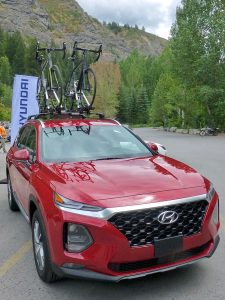
Santa Fe for 2019 shares the new look of Hyundai’s signature “cascade” grille at Robert Redford’s Sundance Lodge.
When our drive started, the first thing I noticed along with the precise steering was the near silence of our interior. Insulation in the fenders and padding on various parts of the floor are augmented by thicker laminated glass.
Hyundai officials stressed the safety inherent in every Santa Fe, from the least-expensive $25,300 SE, to the $27,680 SEL, to the $29,800 SEL Plus with leather, to the $32,600 Limited, and to the $35,450 Ultimate.
Standard features are forward collision avoidance assist; blind-spot avoidance assist; lane-keeping assist; cross-traffic avoidance; safe exit assistance; high-beam assist; smart cruise with stop-and-go at traffic lights; and driver attention warning.
As you move up in models, avoiding the multiple-choice plan of adding options piecemeal, you get refinements that set the Santa Fe apart. For example, along with back-up warning, you get a rear exit assist, which prevents a rear-seat occupant from opening the rear door if the Santa Fe notes that a car is approaching on that side to pass. Same if a child or pet is in the rear seat and the driver locks the vehicle and runs inside a store. Any movement by the child or pet will caust an alert to sound on your smartphone, and the horn honks.
If that’s all futuristic over an above the now-familiar heads-up display, wireless charger, heated and ventilated front seats, surround view when parking, rain-sensing wipers, panoramic sun roof, rear sunshades, music restoration on the Infinity sound system with music restoration, that’s what you have available on the new Santa Fe.
After we had returned to our Stein Eriksen home base for dinner, I couldn’t help bringing up the amazement I registered with the combined lane-keep centering and the sport handling, but in different conversations, several of my fellow journalists cut me off and said, “Oh, I switched the lane-keep off.”
We car-testing journalists love to act like we’re better drivers than the norm, and in many cases we might be. But in our arrogance we can insist we don’t want any car assisting us. I said with the Santa Fe, that was a mistake for two reasons. First, you don’t get to evaluate a valuable safety feature. And maybe, I said, “you just didn’t want the car pointing out how often you veer across the white lines.
A professional road-racer, better than any of us, might drive hard in a new Santa Fe with all the devices engaged and say, “I’ve been trying to do this my whole career, and this SUV does it automatically!”
Clad in all-new sheet metal on the outside and with a completely redesigned interior with all soft facings, plus a much more rigid platform and all the driving-assist stuff, the new Santa Fe is the perfect example of how a high-tech company can build a safe, solid, cutting-edge vehicle. It may be the perfect compromise of a smooth and comfortable family hauler that is ready, willing and able to go off-roading with Jeep-like performance, head for the shopping mall, and, when pushed, handle like a slot-car.
Veloster keeps quirks, adds power and refinement
Filed under: Equinox, Autos
By John Gilbert
Ideas for new car designs come and go with regularity, and every once in a while, one comes out that startles the often-boring norms. If it’s successful while standing out amid the sameness, it might earn the ultimate praise and be called “quirky.”
In 2007, Hyundai showed its new Veloster, which was certain to be quirky as soon as it hit the pavement. That came in 2011, after it was introduced at the Detroit Auto Show. It sets new standards of being quirky, with one big door on the driver’s side, and two smaller doors on the passenger side. Who ever heard of a 3-door coupe?
Curiously, about the same time Nissan brought out its Juke, an odd-looking compact that looked like a small SUV that had partially melted. That was quirky enough to look like a sibling of the Veloster, but they both endured in their separate ways.
As the auto world turns, things change. Nissan decided to come out with a smaller crossover called the Kicks, and it will replace the Juke, apparently.
If that means the Veloster must soldier on alone, it can handle it. Motor Trend announced there would be no change to the 2018 Veloster, but Hyundai fooled ‘em. Behind the curtain, Hyundai had prepared an all-new Veloster to replace the original, as a 2019 model. It is somewhat more mainstream, with some of the odd bulges rounded off.
But the Veloster’s main trademark remains. If you approach it from the driver’s side, it is a compact little 2-door coupe; approach it from the passenger side, and it appears to be a compact 4-door sedan. In reality, it is both. The Veloster has a large door on the driver’s side, although you could still squeeze behind the driver’s bucket into the rear. But no need. On the passenger side, there are two doors, big enough in front, and conveniently sized for easy entrance to the rear.
Mike O’Brien, the affable vice president for product planning for Hyundai America, calls it a “compact sporty car,” and that covers it well. It will continue the unique 2-plus-1 door design, and its center dual exhausts. It also adds all the latest safety and security items, such as blind spot alert, rear cross traffic warning, and adds the ability to execute voice commands. Wireless charging gives it a progressive feature, and it also provides attention alert, to startle you back to full focus if it senses that your senses are fading.
Veloster used to be underpowered, with an adequate normally-aspirated 1.6-liter engine. For 2019, there is a proven 2.0-liter 4-cylinder, with Atkinson cycle valve-delay operation, as seen in the Elantra and new Kona SUV. It delivers 147 horsepower at 6,200 RPMs and 132 foot-pounds of torque at 6,000.
Those are decent numbers, but the optional engine is a prize — a 1.6-liter turbocharged 4, producing 201 horsepower at 6,000 revs and an impressive 195 foot-pounds of torque that maintains that peak from 1,500 to 4,500 RPMs — or, from idle speed to don’t-attract-the-cops.
Hyundai acknowledges that Veloster is a niche car, but it fits the company’s carefully timed plan to offer performance options on top of economy and quality at an affordable price. O’Brien points out that the median age of Hyundai buyers is 55, and for Veloster it is 49, helping lead into that lucrative younger-buyer element. Also, 45 percent of Veloster buyers traded their cars in for another Hyundai product.
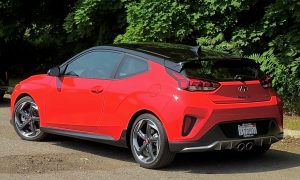
Some of the odd bulges have been smoothed out, as the Veloster transforms into a smooth sporty coupe.
The new Veloster, however, might prove to be a destination more than a stepping stone, because along with all its features that are above its quirkiness and station, it also adds a strong dose of performance.
Hyundai had a regional introduction for the Veloster and the Kona, in Detroit. Part of the reason, officials said, was to show the U.S. media that this time Detroit is serious about recreating itself and eliminating its long-standing blight and boarded-up locations. So part of the programmed drive route took us through some urban areas so we could see for ourselves. By luck, I had enlisted an old friend, Frank Washington, as codriver. Frank and I have often driven together, but this time it was special, because he’s a black man who has lived in the tough areas of Detroit, and as we drove, he was able to give me a graphic tour of what new projects are happening and what historic site it might have been.
As it turned out, we drove only the turbo 1.6 version of the Veloster, and were impressed, especially with its coordination with the 7-speed dual-clutch automatic. With paddle shifters on the 7-speed, we were impressed with the car’s handling.
We were supposed to switch to the 2.0, but instead I jumped at the chance to try the sportier “R Spec” version, with flashier appearance and Hyundai’s homebuilt 6-speed stick, that shifts as smoothly as any manual in the industry.
Suspension has been modified, revised in the front, with multilink replacing the beam unit at the rear, which enhances all Veloster new models, but the R-Spec adds special 18-inch alloys with high-performance Michelin Pilot tires with the new suspension stiffened and steering also tightened, plus an enhanced “exhaust character” gizmo. You can set the car for normal, sport, or smart, and if you like the exhaust sound, you can pipe in “active engine sound” and either increase the volumn or eliminate it electronically through the audio system speakers.
Fuel economy rates 28 city and 34 highway in the Ultimate 1.6-turbo, while the R-Spec offers 26/33. The 2.0 should get as good and maybe more miles per gallon, just because you wouldn’t be expected to drive it as hard.
With a length of less than an inch longer, at 166.9 inches, and less than an inch wider, at 70.9 inches, the Veloster has the same height and wheelbase, but inside it takes better advantage of what’s available. Mike Evanoff, manager of small car product planning, said that cargo space behind the second row seats is more than in the Volkswagen Beetle, Mini Cooper, Fiat 500, and Toyota C-HR — all of which might fit into the “quirky” corner of their showrooms, but none of which can match the Veloster’s performance.
On top of that, when you select the 1.6 turbo you get the choice of 6-speed stick, automatic, or 7-speed dual-clutch transmission with paddles, while the R-Spec offers stick only.
Perhaps the best news is the pricing of the new Veloster. The basic front-wheel-drive with the 2.0 stdarts at $18,500. Move up to the automatic and it’s $1,000 more. Moving all the way up, past the Ultimate’s impressive feature upgrades, to the top of the line Turbo R version, and it’s a mere $22,900.
For all that performance, and 30-plus miles per gallon, starting under $23,000 is a bargain for shoppers looking to downsize, or for a second car as an urban runabout, or for sending a kid off to college with a safe, solid vehicle.
Among the features, Evanoff said the customers most-want the blind-spot detection/warning, but what might be most important is a sophisticated new advanced emergency braking feature, which not only warns you if you’re closing too fast on the car ahead, but will apply full braking to help you stop in time to avoid an impending accident.
Known for building durable and trouble-free cars with great mileage, at bargain prices, the value and safety built in to the Veloster will now be augmented by a new high-performance division, also, which will be called “N Brand.” Other models will follow, and there will be aftermarket availability in the near future. The “N” comes from Namyang, which is the core development site in South Korea for all of Hyundai’s somewhat subtle performance operations.
The punch in the Ns will come from ideas brought forth by Albert Biermann, hired away from BMW, where he had a hand in developing that company’s “M” models at all levels. Maybe it’s logical that he follows up the M with the N. And maybe it’s about time Hyundai takes so much of what it’s learned in various types of racing and pours it into a high-performance specialty division.
Otherwise, settling for the “normal” new Veloster is impressive to begin with. It’s been most of a decade since Hyundai stepped out of its mundane stature and developed and built its own high-tech engines, strengthened its bodies and frames with high-strength steel from its own plants, built its own transmissions, added considerable style, and steadily improved on its reputation for high quality and efficiency with cars that offer more than the modest prices might suggest. The 2019 Veloster now means you can choose to combine that reputation with the cute and quirky leader and now gain some real performance fun.
Rams, Jeeps, 797-hp Challengers await 2019
Filed under: Equinox, Autos
By John Gilbert
When Dodge Charger and Challenger were powered by almost-obscenely powerful Hemi V8 engines, the curiosity was what could Dodge do next? Next, it turns out, was the definitely-obscene Hellcats with 700 horsepower in 2015. That, we figured, was the ultimate tire-screecher. Then, a year ago, Dodge brought out the overwhelmingly-obscene 2017 Demon, with still more power and torque, and a wider-platform for enhanced stability.
Now it’s 2018, and amid rumors that companies such as Ford, and Dodge parent FCA (Fiat-Chrysler Automobiles), are considering reducing or discontinuing cars in favor of building more and more profitable trucks, we approached the “What’s New for ’19” event at the FCA Proving Grounds in Chelsea, Michigan, with even more curiosity. Turns out, a trio of crazy-powerful Challengers are coming out, and all we are lacking is new adjectives to describe them.
Back in the real world, I heckled a few good friends at the company about when it would switch over all its factories to strictly Ram trucks and Jeeps, but they didn’t take the bait. My heckle was based on the undeniable facts measuring the year-to-date production and sales of all FCA vehicles. Updated figures for the first six months of 2018 show Ram sold 189,997 pickups through June, and 110,382 Wranglers.
Those are by far the top sellers for FCA worldwide. Wrangler, all new in the last year and vastly improved overall, including the spectacular new Chrysler-built 2.0 turbocharged engine, increased sales by 38 percent from last year, through June. Ram’s top-selling figure, on the other hand, actually decreased in sales for the same period by 8 percent, because the completely redone 2019 Ram was not fully distributed to dealers early this calendar year.
However, ranking all the rest of Dodge, Chrysler, Fiat and Jeep vehicles, the order following 1. Ram and 2. Wrangler for the first six months of this year were: 3. Grand Cherokee, 91,589, barely holding off 4. the smaller Cherokee, which showed a 31 percent increase to 91,286, and 5. the Compass, also entirely new, at 72,368 for a whopping 315-percent increase. Just shows what you can do when you do a good job of reinventing a model.
The rest of the top dozen are 6. the Caravan (70,511), 7. Pacifica (53,910), 8. Renegade (41,906), 9. Journey (41,023), 10. Charger (34,786), 11. Challenger (30,545), and Durango (27,378).
Ram remains the king and is certain to increase sales as 2018 continues, but after noting the 189,997 sales for six months, if we add together all the Jeeps — Wrangler, Grand Cherokee, Cherokee, Compass and Renegade — sales are a combined 407,531.
Those are some surprising numbers, and remember, they are only for the first six months of 2018. But the Caravan, which seemed destined to be discontinued in the face of the all-new Pacifica, not only is soldiering on, it watched Pacifica sales improve by 14 percent and improved its own status to outsell its much-heralded cousin. Read more



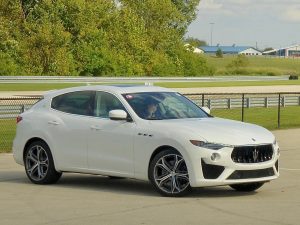

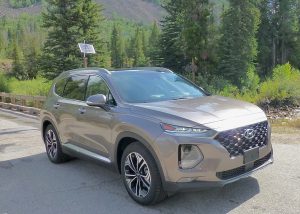
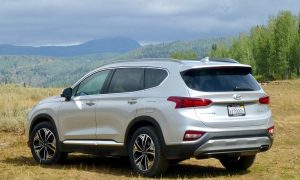
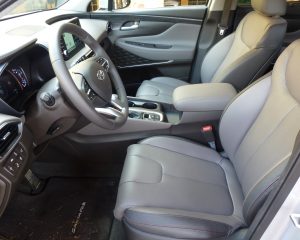
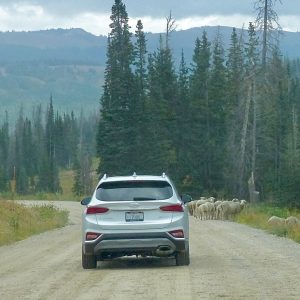
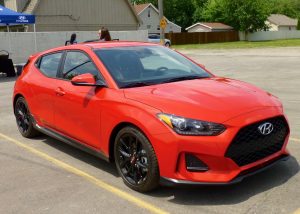
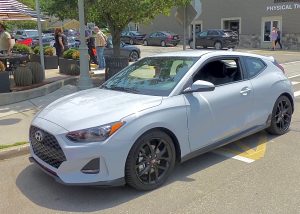

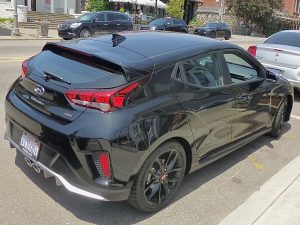
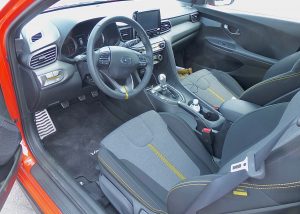
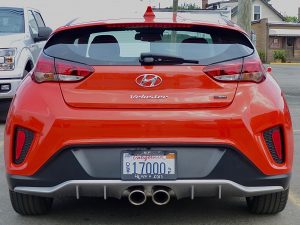
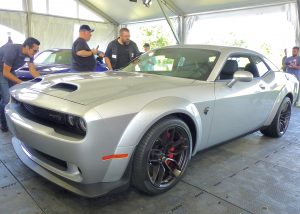
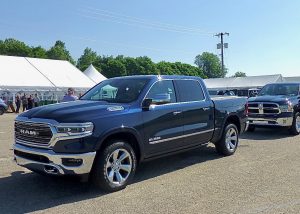
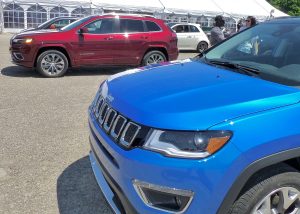
 John Gilbert is a lifetime Minnesotan and career journalist, specializing in cars and sports during and since spending 30 years at the Minneapolis Tribune, now the Star Tribune. More recently, he has continued translating the high-tech world of autos and sharing his passionate insights as a freelance writer/photographer/broadcaster. A member of the prestigious North American Car and Truck of the Year jury since 1993. John can be heard Monday-Friday from 9-11am on 610 KDAL(www.kdal610.com) on the "John Gilbert Show," and writes a column in the Duluth Reader.
John Gilbert is a lifetime Minnesotan and career journalist, specializing in cars and sports during and since spending 30 years at the Minneapolis Tribune, now the Star Tribune. More recently, he has continued translating the high-tech world of autos and sharing his passionate insights as a freelance writer/photographer/broadcaster. A member of the prestigious North American Car and Truck of the Year jury since 1993. John can be heard Monday-Friday from 9-11am on 610 KDAL(www.kdal610.com) on the "John Gilbert Show," and writes a column in the Duluth Reader.